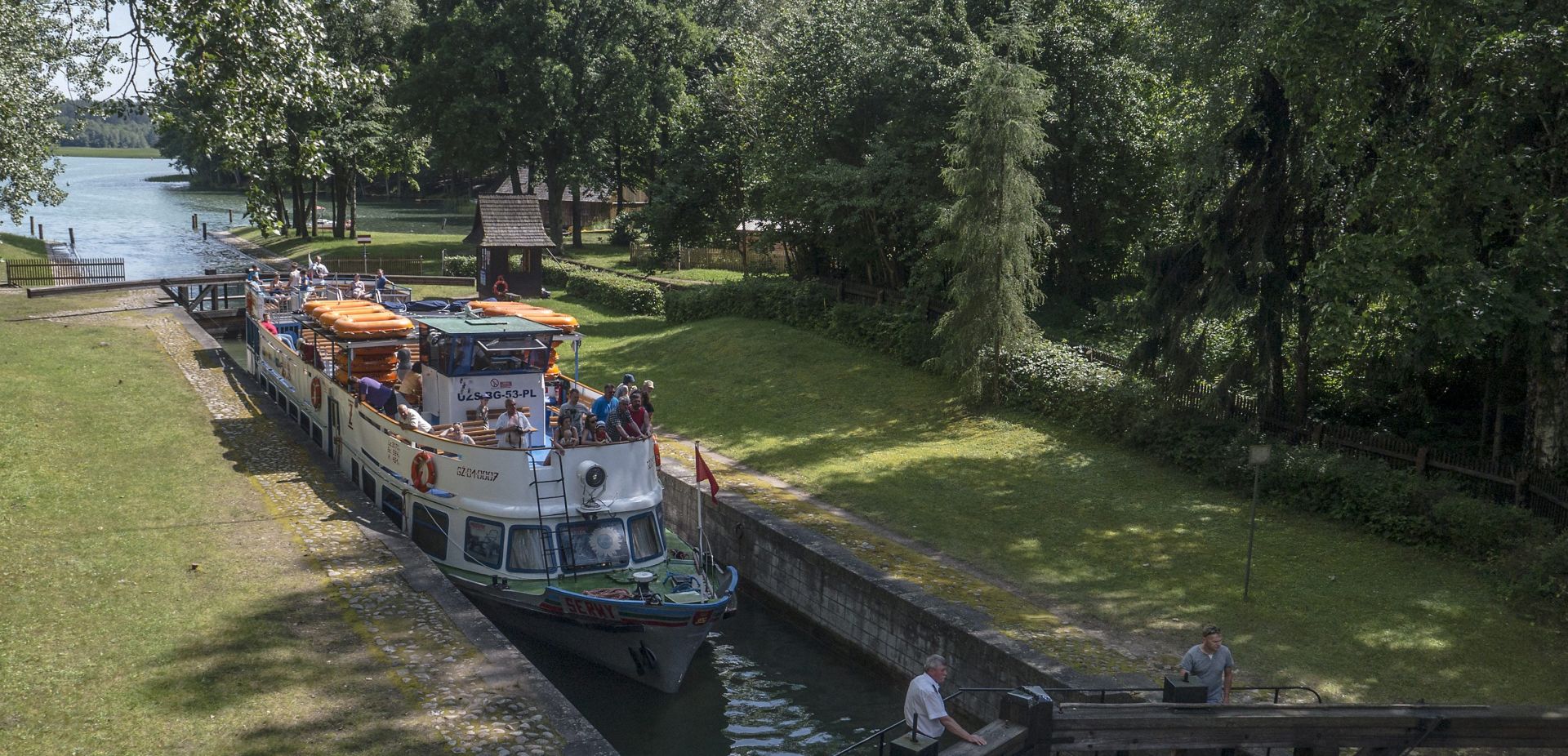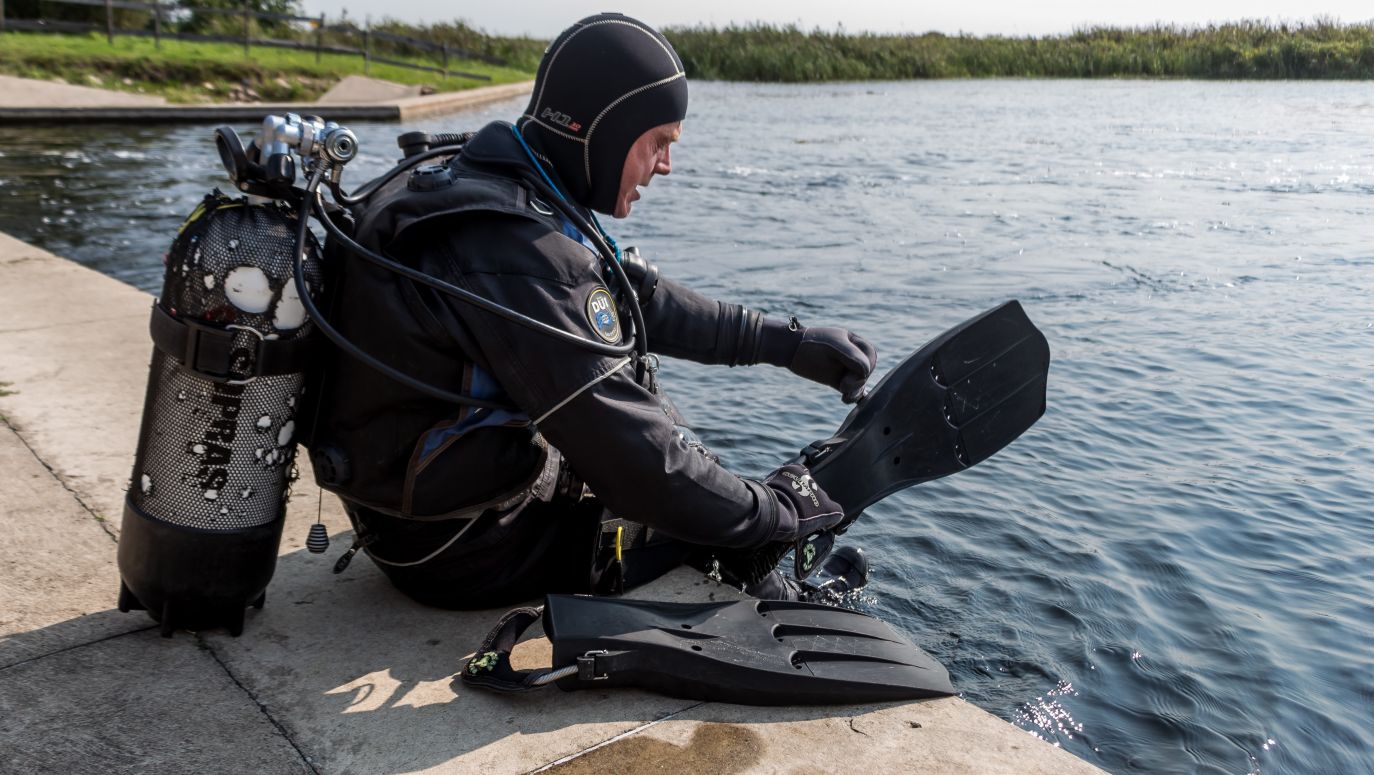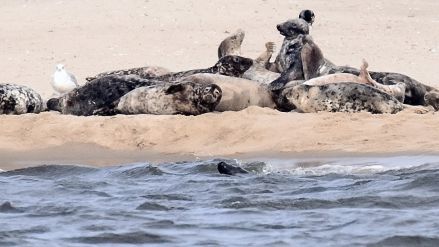Hence, the earlier reference to Eytelwein's textbook atop the crooked table at the inn. Prądzyński studied at night. During the day he rode, walked, waded, swam and made his way through alder and oak-hornbeam forests, oxbow lakes and backwaters on the border between Podlasie and Suwałki, and between the Congress Kingdom and Russian Empire. (The border ran for several dozen kilometers along the Bierza and Netta rivers, moving away further to the north, leaving Augustów, Suwałki and Wigry on the Polish side). Above all, his task focused on the area between the basins of the two great rivers. The challenge was to decide where best to cross the several dozen meters high watershed between the Neman and the Vistula, to determine just where the work of digging the canal would require the least effort.
Koterbska sings
There were three possibilities. The shortest route would be to dig from the Supraśl River towards the Świsłocza where it meets the Neman. The second option was to start from the Biebrza, moving up to the Tatarka, and then cut through the swamps and watercourses that dry up in the summer, through the Sokołda and Przerwa, to reach the Łosośna that is also a part of the Neman basin. Had this happend, who knows? Perhaps the famous Polish singer Maria Koterbska and the whole of Poland wouldn’t have sung "Augustów Nights” but rather a song called "Białystok Nights"?
Ultimately, however, it was the hydrodynamics that decided the outcome. (Yes, the Eytelwein proved useful for something!). In the era before the invention of steam-powered dredgers (and God knows, even today!) siltation has been the canal builders’recurring nightmare. Thousands of tons of earth and soil flow down with the rains and the streams and end up settling at the bottom of the stagnant water of the canals. After a few years, the barges begin to scrape along the bottom. The simplest and cheapest solution to this problem is to construct the canal route in such a way that it has a river flowing into it midway, generating a small current.
The second issue concerns the huge mining costs involved, something that can be tackled by routing the canal as much as possible through terrain featuring lakes, preferably long, post-glacial, ribbon lakes.
 SIGN UP TO OUR PAGE
SIGN UP TO OUR PAGE 
This consideration was also a decisive factor. The Czarna Hańcza, flowing from Wigry lake, and the Sucha Rzeczka, fed by the Serwy lake, supplied water to the highest section of the Canal running through the Primeval Forest. This stretch of the Canal is sometimes known as the Czarnobrodzki section. Other lakes such as the Necko, the Krechowieckie, the Studzieniczne and the Orle also played a part.
However, the final choice of the waterway connecting the Vistula and the Neman was made by the Tsar himself on April 22, 1824. The details were determined at a meeting in Łomża in June 1824, attended by General Hauke from the Polish side, and, on the Russian side, Pierre Bazaine [the French engineer who became Director of the Imperial Russian Academy of Sciences and Chairman of the Committee for Buildings and Hydraulic Works in 1824]. Both made use of maps that had been drawn by Ignacy Prądzyński.
He didn't like water
Major Prądzyński himself initially took over the Canal construction management but he wasn't to remain in Augustów for too long. The "Prądzyński’s Mansion" in Augustów, which used to house the Canal Construction Management, and is a museum today, is something of an antiquarian joke. In early 1826, Prądzyński was arrested in connection with the investigation of the Patriotic Society. After his release in 1829, the November Uprising [against Russia] broke out in 1830. It was during the uprising that he became renowned as one of the most astute strategists, winning the battle of Iganie, and serving as commander-in-chief for four days (August 16-19, 1830). Exiled to Vyatka in Russia, he came back to Poland in 1834, where he lived on an estate in the Świętokrzyskie Mountains. Ironically, perhaps presciently, he wasn't expecially fond of water. He was to die by drowning when taking a healing bath at the spa in Heligoland in Germany [in 1850].
But his sketches and plans were as powerful as if he had drawn them with a Magic Pencil. In 1825, 5,000 people joined construction sites from the Biebrza to the Neman (a number that would later increase to 7,000). The engineering corps, the penal company of the Polish Armed Forces brought in from Zamość to do the hardest work, and local peasants along with Lithuanian tar makers (for whom the job represented the opportunity of a lifetime) were working hand in hand. The Russian Old Believers who had come to the Suwałki Region in the 17th century to escape persecution from Russia were especially valued as blacksmiths. The Jewish poor from
shtetlach from Goniądz to Białystok were hired to draw water by large windlasses.
The greatest paradox of the Canal is the fact that by the spring of 1825, on learning about the scale of the works undertaken, Berlin, concerned about the durability of the Holy Alliance, lowered its tone and took a unilateral decision to reduce customs duties. And thus the total investment that had been envisaged for the grain trade turned out to be unnecessary and was never fully used. The Poles finished their part (resuming work after the November Uprising, which they completed in 1840), but the Russians were reluctant to continue working on the Windawski Canal. Nonetheless, the several sections and weirs that were already built are proudly displayed by the Lithuanians to this day.
Eighteen locks
(In the Kingdom meanwhile) the flywheel was spinning: brickyards were working from Augustów to Wólka Wołłowiczowska, ironworks and iron foundry too in the estate of count Karol Brzozowski (which today is known as Huta Sztabińska). Blast kilns for burning ordinary and hydraulic lime were roaring, gravel was being dug near Sejny, granite was being brought from the Świętokrzyskie Mountains, and red clinkers were being fired in Warsaw. Lubecki doubled and tripled: he started the creation of the fleet, signed contracts for the systematic felling of trees (something that in those days did not scandalize anyone), and he launched a tar factory (to seal the locks and gates) on such a scale that to this day the Augustów Canal is still cited as the "cradle of the Polish bitumen industry”…
Why? Of course, one could invoke his reputation as a Keynesian of his time, straight from the dreams of the journalist Woś, and how he was spurring the economy with the help of large investments. Undoubtedly, there's much truth in that hypothesis.
However, it was at least as important for him (and for the Congress Kingdom's elite) to bind the lands of Congress Poland more closely with Lithuania. Since the tsar was not eager to fulfill promises dating from the days of the Congress of Vienna and did not want to join the "north-western provinces" to Poland, the plan was to tie them together at least economically!
There was some logic in this, even though from the second half of the 19th century onwards, only rafts, local travelers, letters, and at times some honey, resin or vendace were moving through the Canal. The vast majority of goods was transported by cart along the Kaunas route, and in time on the St. Petersburg railway. Honestly, who would choose to push up the Narew, Biebrza and Netta rivers, passing through sluices 18 times?
And yet. Some lucky star hung over the Augustów Canal. It was looked after by the Polish Government during the interwar period and by the communist authorities after WW2. Of course, everything was done within limitations. For members of the Sanacja interwar political movement, the Yacht Club and the Officers' Club in Augustów were the most important. After the war, the Water Management Authority in Białystok poured concrete everywhere without remorse up until the early 1970s, when the entire system was finally placed under conservation protection and wood, clinker and fascine were once again deployed for use.


 SIGN UP TO OUR PAGE
SIGN UP TO OUR PAGE 





